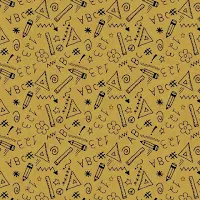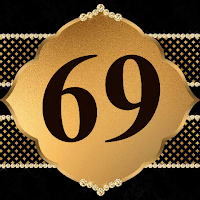In other words, it has
reflectional symmetry across a vertical axis.
The term palindromic is derived
from palindrome, which refers to a word (such as rotor or racecar) whose
spelling is unchanged when its letters are reversed.
The first 30 palindromic
numbers (in decimal) are:
0, 1, 2, 3, 4, 5, 6, 7, 8,
9, 11, 22, 33, 44, 55, 66, 77, 88, 99, 101, 111, 121, 131, 141, 151, 161, 171,
181, 191, 202, ... (sequence A002113 in the OEIS).
Palindromic numbers receive
most attention in the realm of recreational mathematics.
A typical problem asks for
numbers that possess a certain property and are palindromic.
For instance:
The palindromic primes are
2, 3, 5, 7, 11, 101, 131, 151, ... (sequence A002385 in the OEIS).
The palindromic square
numbers are 0, 1, 4, 9, 121, 484, 676, 10201, 12321, ... (sequence A002779 in
the OEIS).
It is obvious that in any
base there are infinitely many palindromic numbers, since in any base the
infinite sequence of numbers written (in that base) as 101, 1001, 10001,
100001, etc. consists solely of palindromic numbers.
Decimal palindromic numbers
All numbers with one digit
are palindromic, so in base 10 there are ten palindromic numbers with one
digit:
{0, 1, 2, 3, 4, 5, 6, 7, 8,
9}.
There are 9 palindromic
numbers with two digits:
{11, 22, 33, 44, 55, 66, 77,
88, 99}.
All palindromic numbers with
an even number of digits are divisible by 11.
There are 90 palindromic
numbers with three digits (Using the rule of product: 9 choices for the first
digit - which determines the third digit as well - multiplied by 10 choices for
the second digit):
{101, 111, 121, 131, 141,
151, 161, 171, 181, 191, ..., 909, 919, 929, 939, 949, 959, 969, 979, 989, 999}
There are likewise 90
palindromic numbers with four digits (again, 9 choices for the first digit
multiplied by ten choices for the second digit. The other two digits are
determined by the choice of the first two):
{1001, 1111, 1221, 1331,
1441, 1551, 1661, 1771, 1881, 1991, ..., 9009, 9119, 9229, 9339, 9449, 9559,
9669, 9779, 9889, 9999},
so there are 199 palindromic
numbers smaller than 104.
There are 1099 palindromic
numbers smaller than 105 and for other exponents of 10n we have:
1999, 10999, 19999, 109999, 199999, 1099999, ... (sequence A070199 in the
OEIS).
Perfect powers
There are many palindromic
perfect powers nk, where n is a natural number and k is 2, 3 or 4.
Palindromic squares: 0, 1,
4, 9, 121, 484, 676, 10201, 12321, 14641, 40804, 44944, ... (sequence A002779
in the OEIS)
Palindromic cubes: 0, 1, 8,
343, 1331, 1030301, 1367631, 1003003001, ... (sequence A002781 in the OEIS)
Palindromic fourth powers:
0, 1, 14641, 104060401, 1004006004001, ... (sequence A186080 in the OEIS)
The first nine terms of the
sequence 12, 112, 1112, 11112, ...
form the palindromes 1, 121, 12321, 1234321, ... (sequence A002477 in the OEIS)
The only known
non-palindromic number whose cube is a palindrome is 2201, and it is a
conjecture the fourth root of all the palindrome fourth powers are a palindrome
with 100000...000001 (10n + 1).
Other bases
Palindromic numbers can be considered in numeral systems other than decimal. For example, the binary palindromic numbers are those with the binary representations:
0, 1, 11, 101, 111, 1001,
1111, 10001, 10101, 11011, 11111, 100001, ... (sequence A057148 in the OEIS)
or in decimal:
0, 1, 3, 5, 7, 9, 15, 17,
21, 27, 31, 33, ... (sequence A006995 in the OEIS)
Look it up on Wikipedia
Photo: Pixabay



